When it comes to the staple herbs that define Mexican and Caribbean dishes, there’s one that stands out, weaving its way through countless recipes and adding a burst of flavor to both culinary traditions. This herb is a key player in the kitchen, bringing freshness and zest to everything from robust stews to zingy salsas.
It’s not only beloved for its vibrant taste but also for its health benefits, making it a favorite among chefs and home cooks alike. So, what is this versatile herb that’s essential in so many delicious dishes from these regions? Let’s dive into this question of What herb is found in most Mexican and Caribbean dishes, the flavors that make Mexican and Caribbean foods truly sing.
Types of Herbs and Spices that are found in most Mexican and Caribbean Dishes
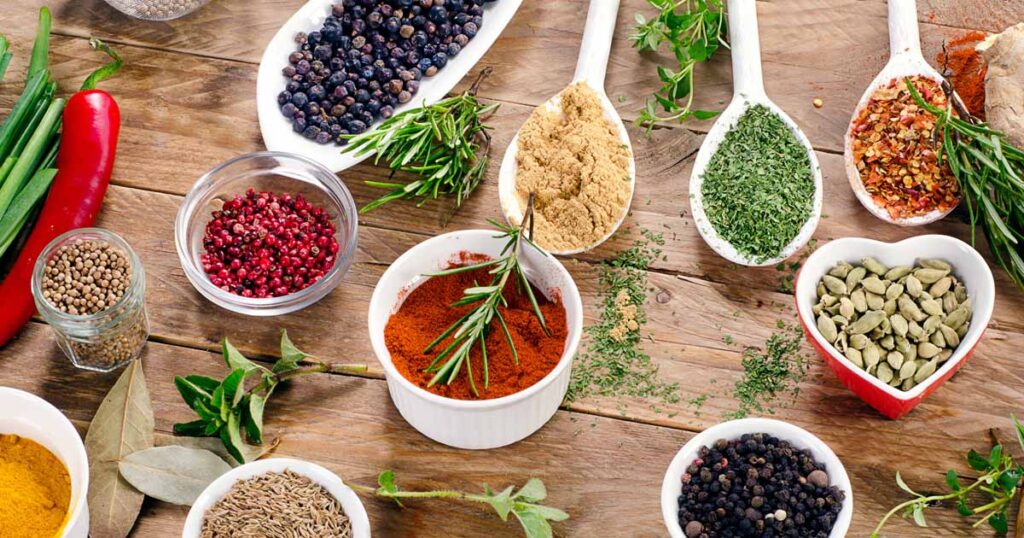
Types of Spices:
- Cumin – Its earthy, warm undertones make it a staple spice in many dishes.
- Allspice – Known for its peppery sweetness and aromatic qualities.
- Annatto – Often used for its coloring as well as its slightly nutty and peppery flavor.
- Chili Powder – Provides heat and a smoky flavor to dishes.
- Caraway Seed – Distinct for its sharp, earthy taste with a hint of sweetness.
- Coriander Seeds – Sweet and floral with a citrus undertone, used whole or ground.
Types of Dried Herbs:
- Cilantro – Often used dried in some recipes, though fresh is more common for its bright and tangy flavor.
- Thyme – Offers a strong, earthy flavor with minty and lemon notes.
- Oregano – Pungent and earthy, essential in Mexican and Mediterranean cuisines.
- Bay Leaf – Adds subtle floral and bitter flavors, used in soups and stews.
- Mexican Oregano – More intense and less sweet than traditional oregano, with mint and citrus highlights.
Types of Spice Blends:
- Taco Seasoning – Typically includes chili powder, cumin, garlic powder, onion powder, and sometimes crushed red pepper.
- Caribbean Jerk Seasoning – A mix that often includes allspice, thyme, cinnamon, garlic, and Scotch bonnet peppers.
- Mole – A complex Mexican sauce that may include chili powders, cumin, and coriander among many other ingredients, depending on the type of mole.
- Garlic – A pungent and aromatic bulb used extensively for its sharp, savory flavor, and it falls under the category of spices when dried and powdered, or herbs when used fresh.
1. Cilantro
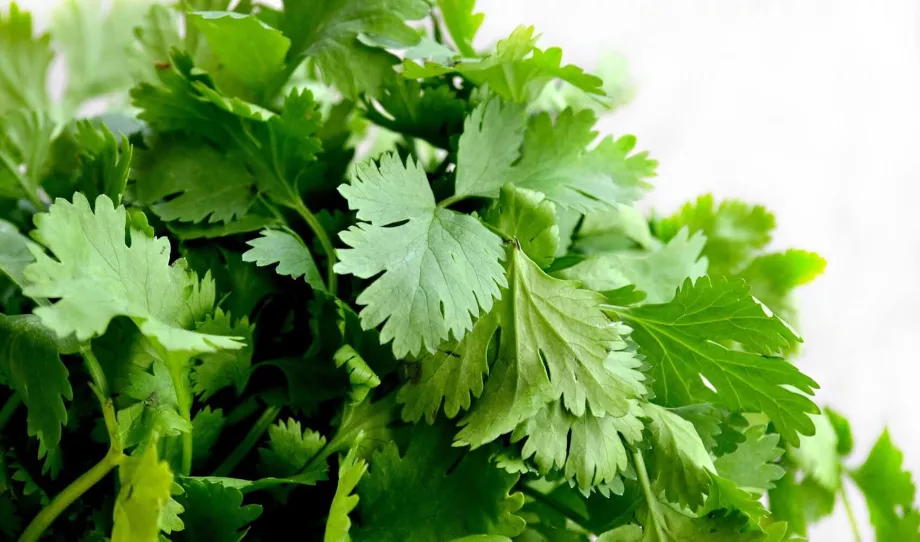
- Color: Bright green, showcasing delicate, lacy leaves that add a visual freshness to any dish.
- Aroma: Cilantro emits a fresh, citrusy scent with a slightly peppery undertone, invigorating the senses.
- Taste: It offers a distinct, tangy flavor, which some people uniquely interpret as a soapy taste due to genetic variations.
- Application/Where to use: This herb is crucial in salsas, tacos, and guacamole, and often sprinkled over dishes as a fresh garnish in both Mexican and Caribbean cuisines.
- Flavor Pairings: Cilantro pairs excellently with lime, avocado, tomatoes, and onions, enhancing the fresh, zesty profiles of these ingredients.
2. Cumin
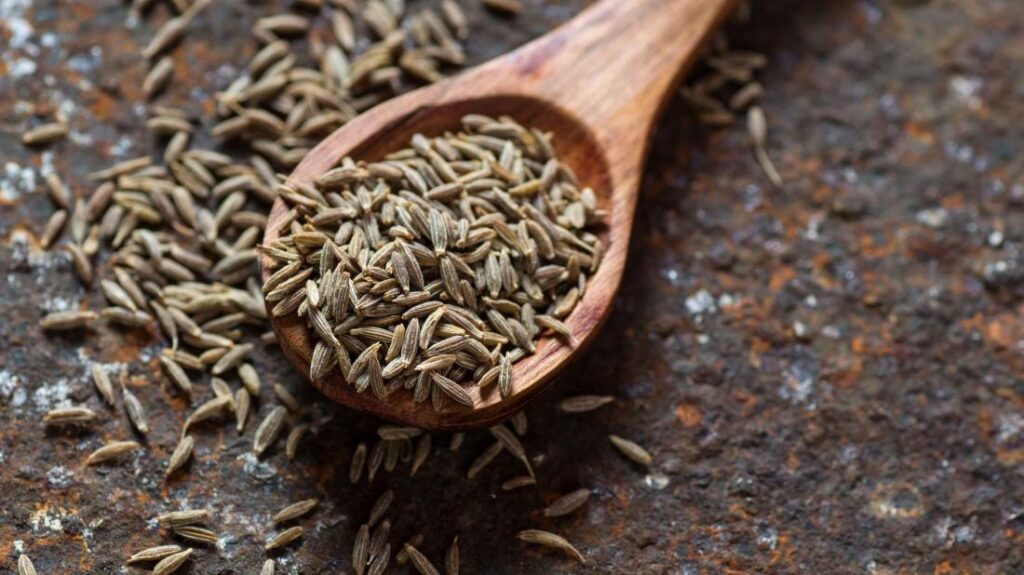
- Color: Appears as small, golden-brown seeds or finely ground powder.
- Aroma: It has an earthy, warm aroma with nutty undertones that are immediately recognizable.
- Taste: Cumin is known for its spicy-sweet flavor with a slightly bitter edge, adding depth to any dish.
- Application/Where to use: Essential in taco seasonings, cumin is also used in various bean dishes, stews, and marinades for meats.
- Flavor Pairings: It matches well with coriander, chili, garlic, and even cinnamon, which helps elevate the warm, spicy notes of cumin.
3. Allspice
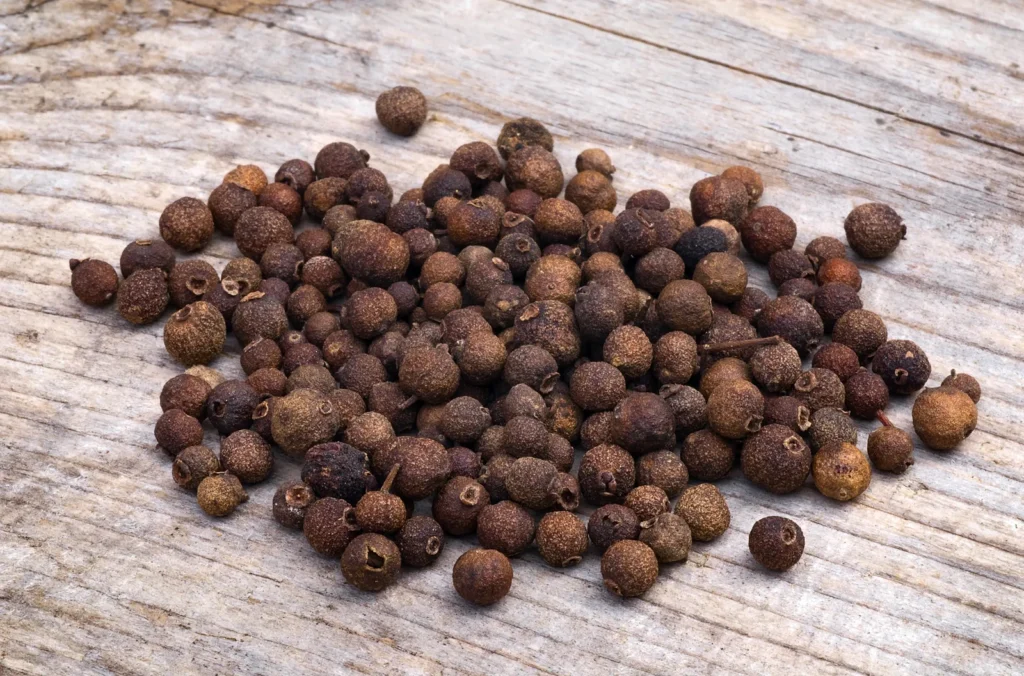
- Color: The berries are small and dark brown, resembling large peppercorns.
- Aroma: Allspice smells like a blend of cinnamon, cloves, and nutmeg, giving it a warm and comforting scent.
- Taste: It tastes pungent and sweet with a peppery finish, making it a versatile spice in both savory and sweet dishes.
- Application/Where to use: Predominantly used in Caribbean jerk seasonings and marinades, allspice is also a staple in many warming drinks and desserts.
- Flavor Pairings: It works beautifully with ingredients like ginger, thyme, and garlic, enhancing meat and vegetable dishes with its robust profile.
4. Annatto
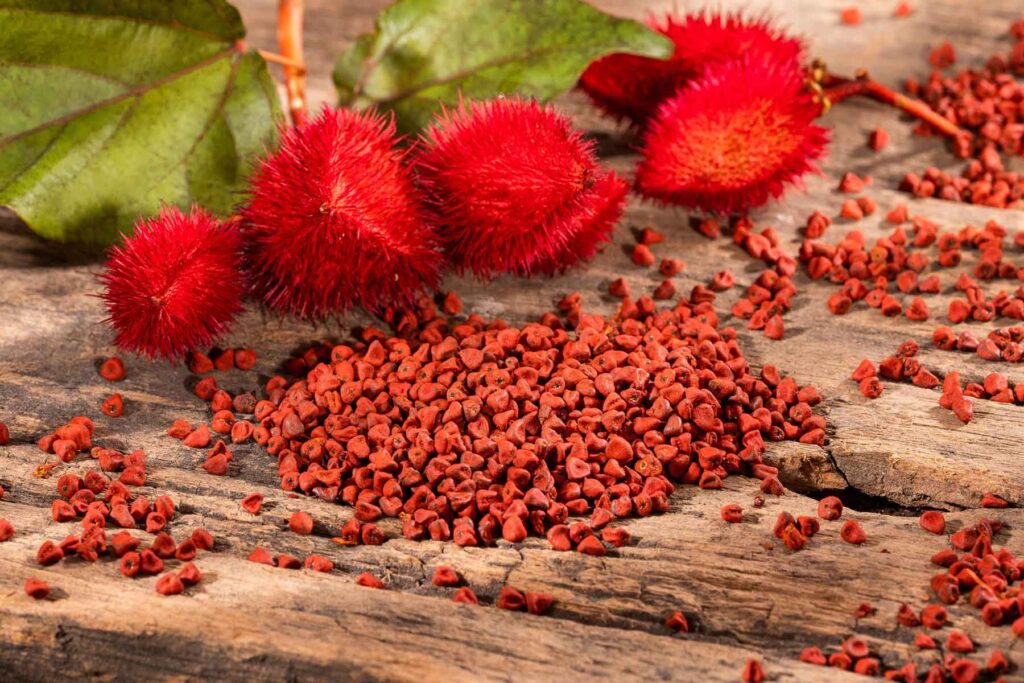
- Color: Ranges from bright orange to deep, vibrant red, which makes it popular as a natural food coloring.
- Aroma: Annatto has a mildly sweet and peppery aroma, which is subtle yet distinct.
- Taste: The flavor is slightly nutty and earthy with a hint of bitterness, often compared to a milder version of saffron.
- Application/Where to use: Used predominantly to color and flavor rice, meats, and soups, annatto is a key ingredient in Mexican and Caribbean cooking.
- Flavor Pairings: It pairs well with spices such as cumin and coriander, and complements ingredients like garlic and citrus flavors.
5. Thyme
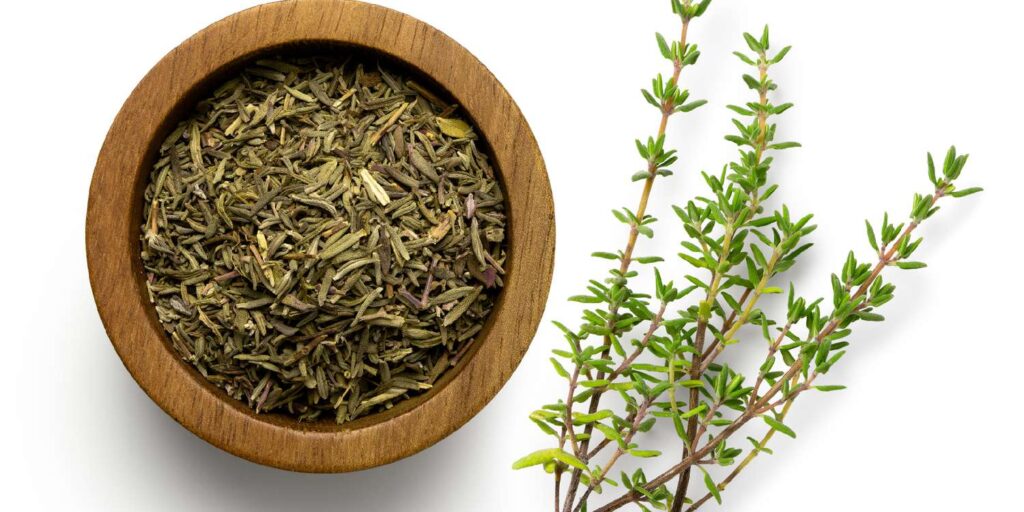
- Color: Thyme has a deep green hue, with small, firm leaves running along thin, woody stems.
- Aroma: This herb emits a sharp, almost minty aroma with earthy and floral undertones, which is instantly recognizable and invigorating.
- Taste: Thyme offers a strong, earthy flavor with slight minty and lemon notes, which can be both subtle and complex in dishes.
- Application/Where to use: Thyme is versatile, used in meat marinades, stews, and soups, and is a crucial component of the traditional Caribbean jerk seasoning.
- Flavor Pairings: It pairs well with garlic, onion, and other robust herbs such as rosemary, as well as with citrus flavors, enhancing the depth of savory dishes.
6. Oregano
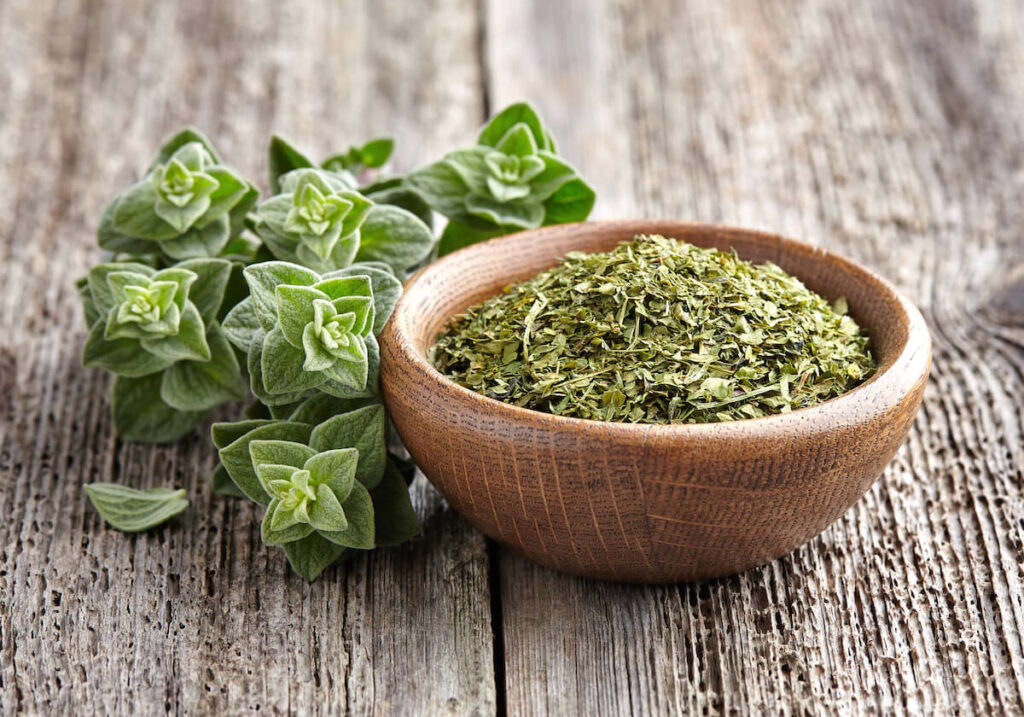
- Color: Oregano features vibrant green leaves, which may take on a more muted, earthy tone when dried.
- Aroma: It has a potent, pungent aroma with a hint of sweetness, reminiscent of both mint and hay.
- Taste: Oregano’s flavor is robust and earthy with strong bitter notes that bring a depth to its culinary use.
- Application/Where to use: Essential in Mexican sauces and salsas, oregano is also sprinkled over pizzas and into pastas, reflecting its versatility.
- Flavor Pairings: It combines well with basil, garlic, and thyme, making it ideal for tomato-based dishes and grilled meats.
7. Bay Leaf
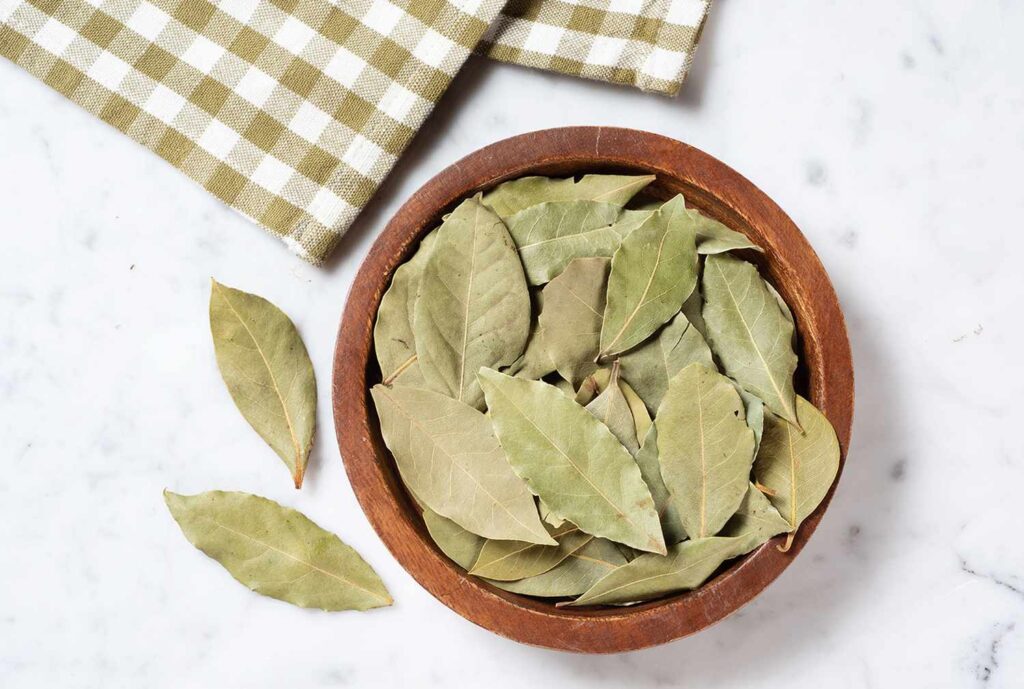
- Color: Bay leaves are a deep, glossy green when fresh and become a dull, olive green when dried.
- Aroma: The scent is floral and somewhat similar to nutmeg or clove, with a hint of pine.
- Taste: Bay leaves impart a subtle, slightly floral and bitter flavor that is integral to building the base of many dishes.
- Application/Where to use: Commonly used in slow-cooked stews and soups, bay leaves are essential for adding complexity to broths and sauces.
- Flavor Pairings: Bay leaves work well with other robust spices like peppercorn and cloves, and are excellent in dishes with a long cooking time to allow their flavors to fully release.
8. Garlic
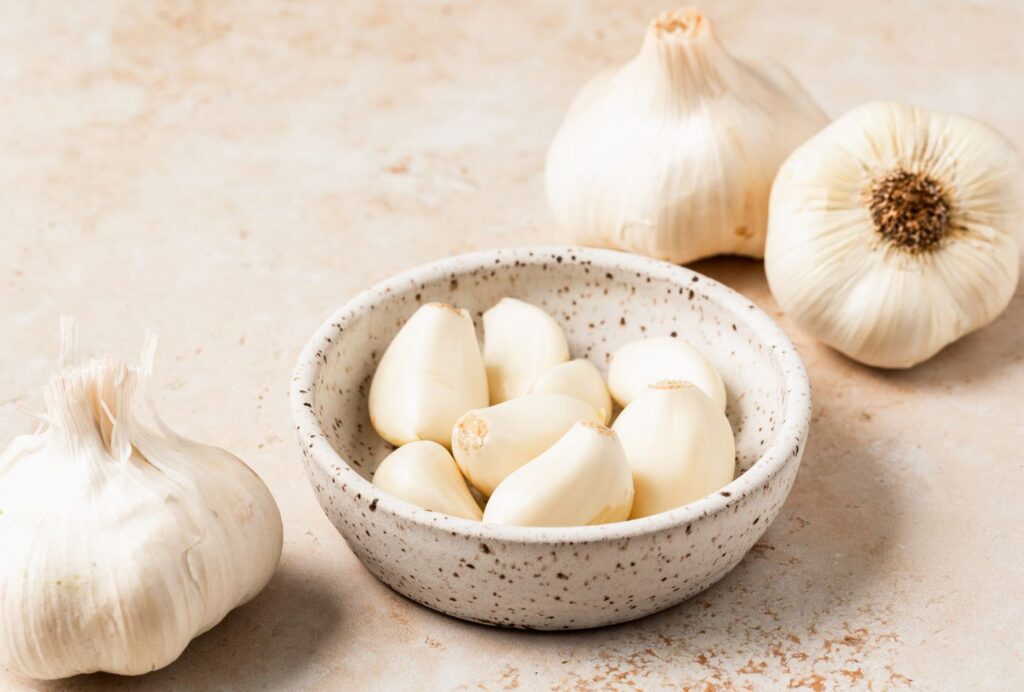
- Color: Garlic cloves are typically off-white with a papery, protective outer skin.
- Aroma: Strong and pungent, garlic has a distinctive smell that is both sharp and earthy, intensifying when crushed or chopped.
- Taste: Garlic offers a bold flavor that ranges from sharp and spicy when raw to mellow and sweet when cooked.
- Application/Where to use: Garlic is fundamental in countless dishes across both Mexican and Caribbean cuisines, used in everything from marinades and sautés to sauces and dressings.
- Flavor Pairings: It pairs beautifully with almost every herb and spice, particularly cilantro, cumin, and chili, enhancing the depth and complexity of flavors in a dish.
9. Chili Powder
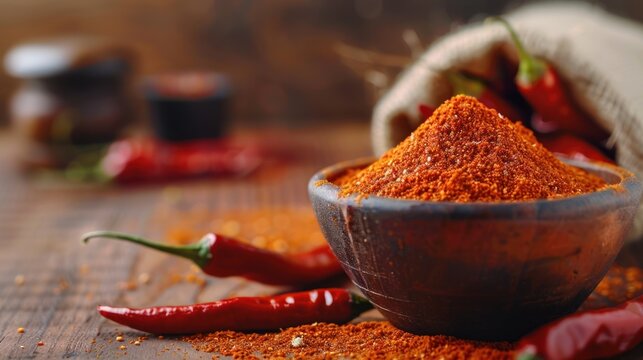
- Color: Chili powder varies from bright red to a deeper, rusty brown, depending on the type of chili used.
- Aroma: It emits a potent, smoky aroma with earthy undertones that can vary in intensity.
- Taste: The taste of chili powder is characteristically spicy with a slight smokiness, bringing warmth and a kick to dishes.
- Application/Where to use: A staple in Mexican cooking for adding heat to tacos, enchiladas, and salsas. In Caribbean cuisine, it’s often used in jerk seasonings and hot sauces.
- Flavor Pairings: Chili powder works well with oregano, cumin, and garlic, making it essential for dishes that require a spicy and vibrant profile.
10. Coriander
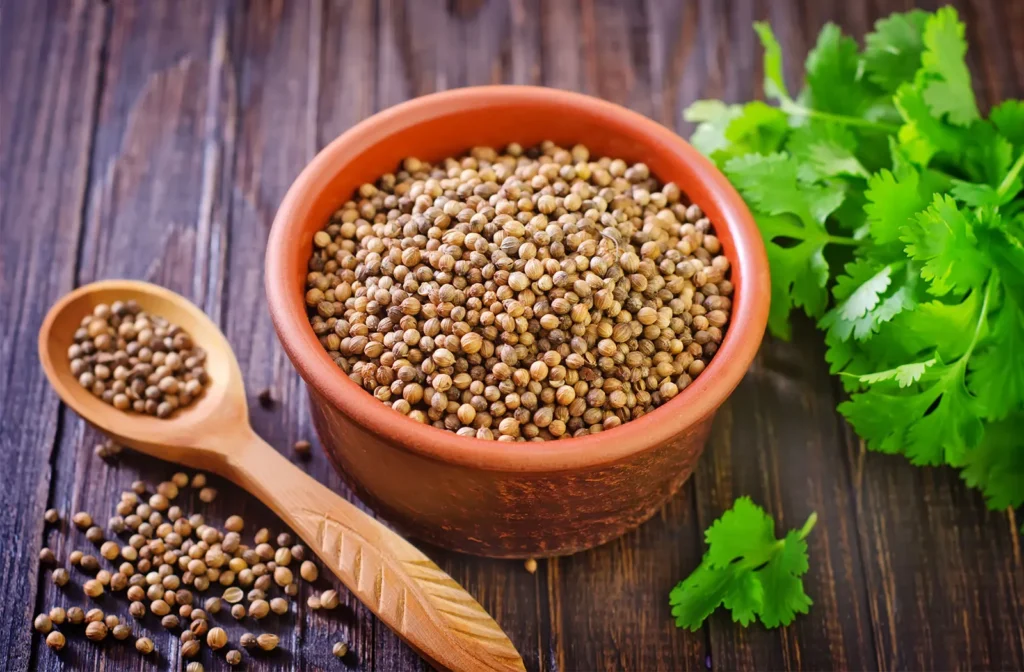
- Color: Coriander seeds are golden-brown, while the leaves (cilantro) are vibrant green.
- Aroma: The seeds have a warm, nutty scent, while the leaves emit a bright, citrus-like aroma.
- Taste: The seeds taste sweet and floral with a hint of citrus, whereas the leaves have a fresh, tart flavor.
- Application/Where to use: Coriander seeds are used in spice blends and marinades, while the leaves are popular in salsas and as a garnish in numerous dishes.
- Flavor Pairings: Coriander seeds pair well with cumin and cardamom, whereas the leaves are often combined with lime and chili.
11. Caraway Seed
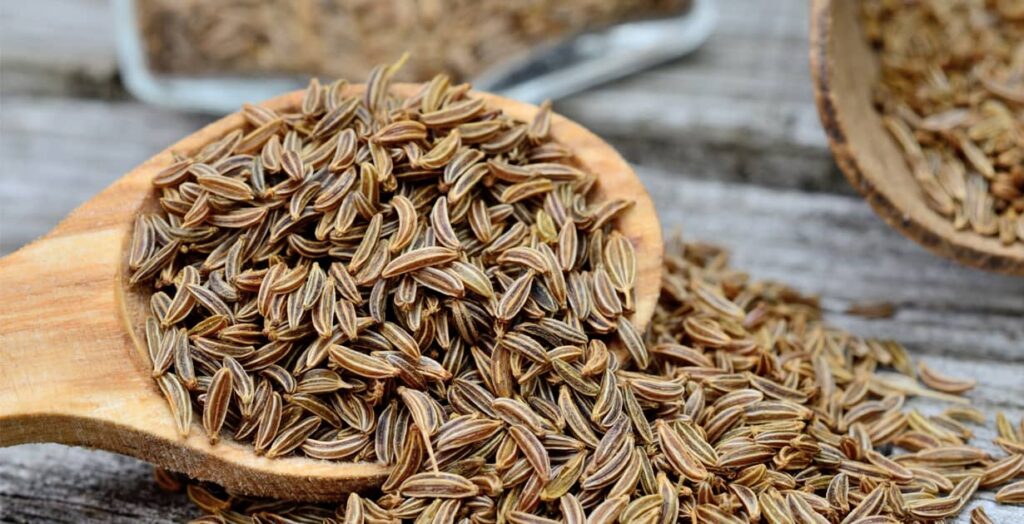
- Color: Caraway seeds are small, crescent-shaped with a dark brown hue.
- Aroma: They emit a strong, aromatic scent with hints of anise and licorice.
- Taste: Caraway seeds have a distinct earthy, slightly sweet flavor with a sharp, peppery finish that lingers on the palate.
- Application/Where to use: While more common in European cuisines, caraway seeds can be found in some traditional Mexican and Caribbean breads and cheeses.
- Flavor Pairings: Pairs well with garlic, dill, and coriander, adding complexity to breads, cheeses, and roasted meats.
12. Mexican Oregano
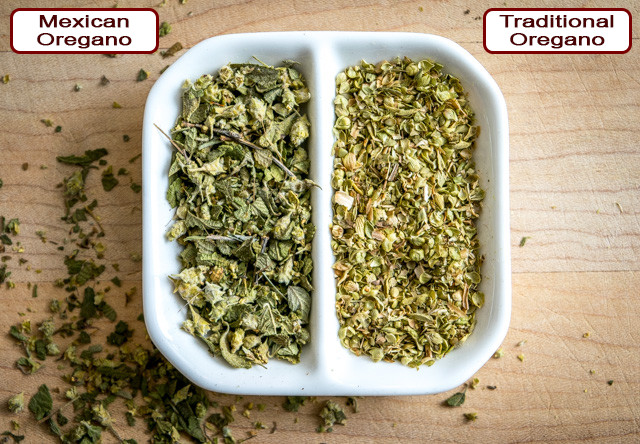
- Color: Mexican oregano has a more vibrant green compared to its Mediterranean counterpart, with a more rugged texture.
- Aroma: It has a potent, robust aroma that is more earthy and less sweet than traditional oregano, with hints of citrus and mint.
- Taste: The flavor is intense and slightly bitter, with complex notes of mint and citrus, making it distinct from other varieties of oregano.
- Application/Where to use: Essential in Mexican cuisine for its bold flavor, used in everything from moles to beans and meat marinades.
- Flavor Pairings: It works exceptionally well with chili peppers, cumin, and garlic, enhancing the spicy and aromatic profiles typical of Mexican dishes.
13. Caribbean Jerk Seasoning
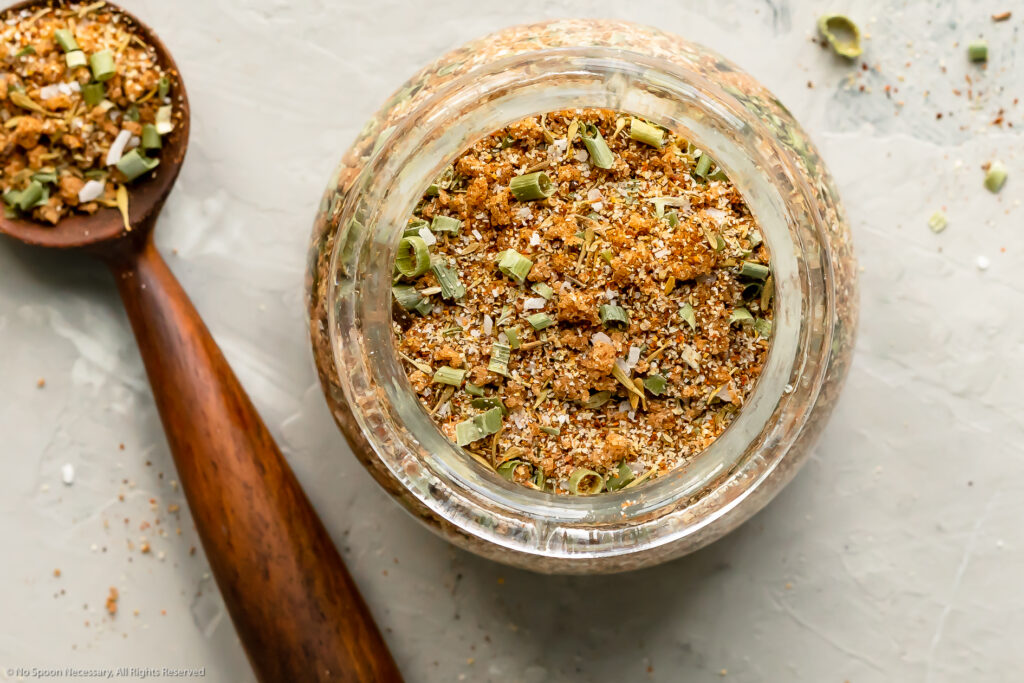
- Color: A rich, deep brown with vibrant specks from various spices and herbs.
- Aroma: Intensely aromatic with a smoky, spicy, and slightly sweet fragrance that fills the air and teases the senses.
- Taste: A fiery yet balanced blend of heat from Scotch bonnet peppers, sweetness from spices like cinnamon and allspice, and earthy notes from thyme and cloves.
- Application/Where to use: Perfect for marinating chicken, pork, or fish. It’s essential in Jamaican jerk cooking, used to season meats before grilling or roasting to create a charred, flavorful crust.
- Flavor Pairings: Works beautifully with sweet elements like pineapple and mango, which help to balance its intense heat. Lime and coconut also complement its rich and spicy profile, offering a refreshing contrast.
14. Mole
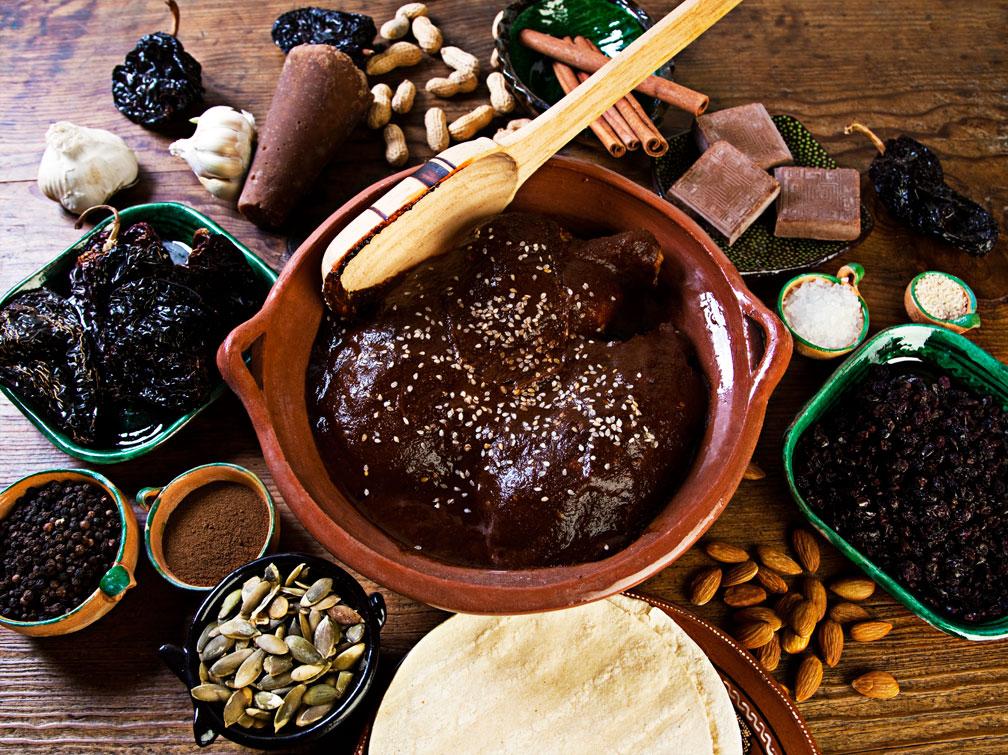
- Color: Typically a dark, chocolatey brown, indicative of its rich, complex base.
- Aroma: Deep and multifaceted, combining the earthiness of spices, the nuttiness of roasted seeds, and the subtle bitterness of chocolate.
- Taste: Mole sauce is known for its layered flavors, which include the sweetness of dried fruits, the smokiness of chili peppers, and the unique depth from chocolate and spices.
- Application/Where to use: Mole is most famously used as a sauce over meats, particularly chicken. It can also serve as a base for stews and other savory dishes, adding richness and depth.
- Flavor Pairings: Complements ingredients like sesame seeds, almonds, and raisins, which are often included in the sauce itself. Pairs well with warm, comforting staples like rice and tortillas.
15. Taco Seasoning
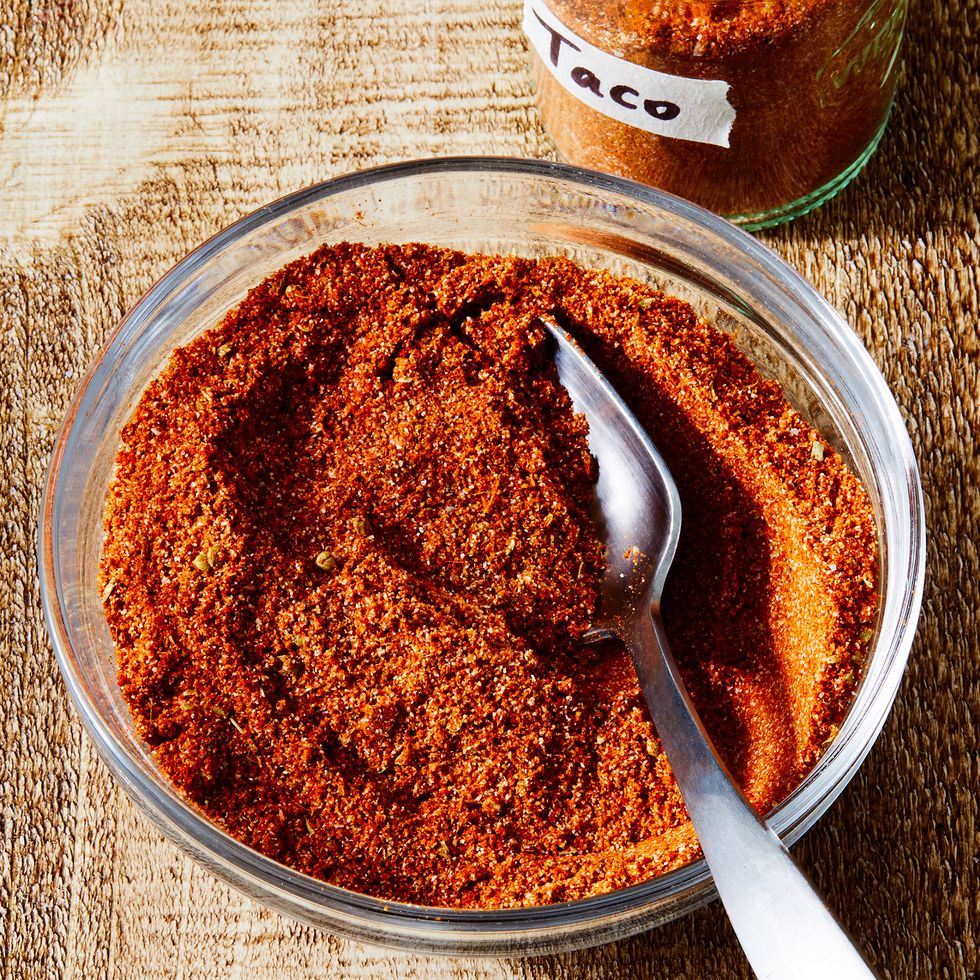
- Color: A vibrant mix of red and orange hues, thanks to the chili powder and paprika.
- Aroma: Sharp and pungent, dominated by cumin and chili powder, with notes of garlic and onion.
- Taste: Spicy and bold, with a pronounced earthiness from cumin and a hint of smokiness from paprika.
- Application/Where to use: Essential for seasoning taco fillings, whether it’s beef, chicken, or vegetarian options. Also used to spice up fajitas, burritos, and even as a flavoring for grilled vegetables.
- Flavor Pairings: Pairs excellently with creamy elements like avocado and sour cream, which help to mellow out the spice, as well as fresh elements like cilantro and lime, which add brightness and contrast.
These spices contribute unique flavors that, while sometimes subtle, play critical roles in crafting the authentic tastes found in various regional dishes. Caraway, though less common, can introduce an unexpected depth to traditional recipes, whereas Mexican Oregano is indispensable for its bold, aromatic contribution to Mexican cooking.
What herb is found in most Mexican and Caribbean dishes?
The most common herb found in both Mexican and Caribbean cuisines is cilantro. Known for its bright, fresh flavor, cilantro is a staple in numerous dishes across these culinary traditions.
It adds a distinctive tangy and citrus-like taste that is essential for salsas, tacos, and guacamole in Mexican food. Similarly, in Caribbean dishes, cilantro enhances the flavors of stews, rice dishes, and marinades, contributing to the vibrant and aromatic profiles typical of the region’s cuisine.

Cilantro, widely embraced in both Mexican and Caribbean cuisines, is the herb that unites many of their traditional dishes. It brings a bright, fresh burst of flavor that is both citrusy and tangy. This versatile herb is often sprinkled over finished dishes or incorporated during the cooking process, adding a vibrant green touch and a refreshing taste that is crucial to the authenticity of these regional foods.
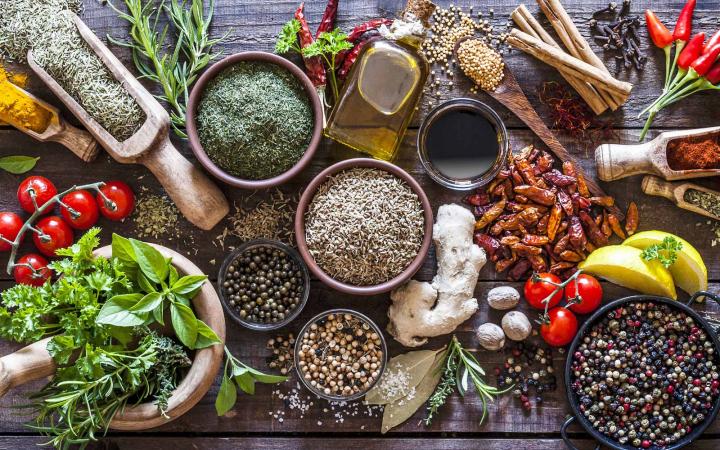
Conclusion
In conclusion, cilantro stands out as the quintessential herb that defines and unites the culinary landscapes of Mexican and Caribbean food. Its unmistakable flavor profile, marked by fresh, tangy notes, plays a pivotal role in many traditional dishes from these regions. From the vibrant salsas of Mexico to the hearty, spice-infused stews of the Caribbean, cilantro adds a layer of complexity and freshness that is hard to replicate with any other herb.
This essential ingredient not only complements the bold flavors inherent in these cuisines but also enhances the overall sensory experience of each dish. Embracing cilantro in your cooking can transport your taste buds to these vibrant cultures, offering a glimpse into the culinary heritage that makes Mexican and Caribbean foods beloved around the world.


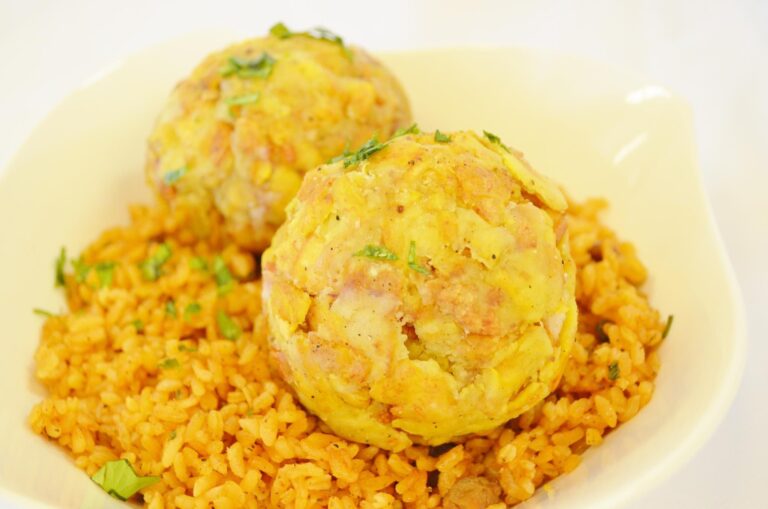




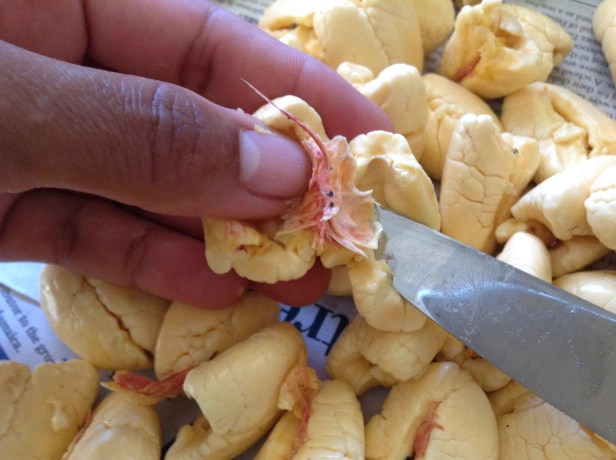
One Comment